16 items found
Page 1 of 1
-
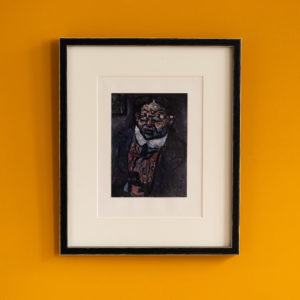
The works of George Roualt. ‘Mr. X’, 1911,
£225The works of George Roualt. ‘Mr. X’, 1911,
Although Georges Rouault a contemporary of Cubism, Expressionism and Fauvism, he never formally associated himself with any of these movements. As an independent he found his inspiration in the realities of everyday life and in religious subjects which he imbued with an authentic spirituality. Early in his career Parisian art dealer, Ambroise Vollard, bought the full contents of Georges Rouault’s studio. The artist agreed on the condition that he could finish his work at his own pace. Most of his works represented circus figures, religious subjects or landscapes.£225 -
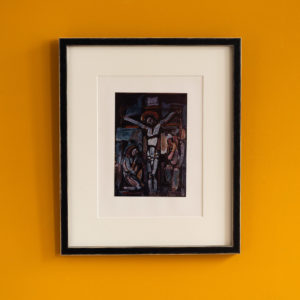
The works of George Roualt. ‘Crucifixion’, c.1918,
£225The works of George Roualt. ‘Crucifixion’, c.1918,
Although Georges Rouault a contemporary of Cubism, Expressionism and Fauvism, he never formally associated himself with any of these movements. As an independent he found his inspiration in the realities of everyday life and in religious subjects which he imbued with an authentic spirituality. Early in his career Parisian art dealer, Ambroise Vollard, bought the full contents of Georges Rouault’s studio. The artist agreed on the condition that he could finish his work at his own pace. Most of his works represented circus figures, religious subjects or landscapes.£225 -

The works of George Roualt. ‘Christ and Two Disciples’, c.1935,
£225The works of George Roualt. ‘Christ and Two Disciples’, c.1935,
Although Georges Rouault a contemporary of Cubism, Expressionism and Fauvism, he never formally associated himself with any of these movements. As an independent he found his inspiration in the realities of everyday life and in religious subjects which he imbued with an authentic spirituality. Early in his career Parisian art dealer, Ambroise Vollard, bought the full contents of Georges Rouault’s studio. The artist agreed on the condition that he could finish his work at his own pace. Most of his works represented circus figures, religious subjects or landscapes.£225 -
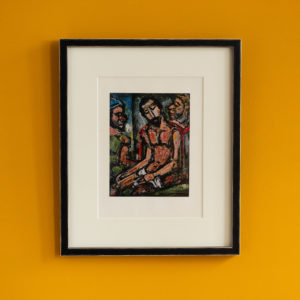
The works of George Roualt. ‘Christ Mocked by Soldiers’, 1932,
£225The works of George Roualt. ‘Christ Mocked by Soldiers’, 1932,
Although Georges Rouault a contemporary of Cubism, Expressionism and Fauvism, he never formally associated himself with any of these movements. As an independent he found his inspiration in the realities of everyday life and in religious subjects which he imbued with an authentic spirituality. Early in his career Parisian art dealer, Ambroise Vollard, bought the full contents of Georges Rouault’s studio. The artist agreed on the condition that he could finish his work at his own pace. Most of his works represented circus figures, religious subjects or landscapes.£225 -
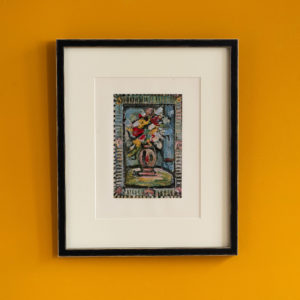
The works of George Roualt. ‘Bouquet’, c.1938,
£225The works of George Roualt. ‘Bouquet’, c.1938,
Although Georges Rouault a contemporary of Cubism, Expressionism and Fauvism, he never formally associated himself with any of these movements. As an independent he found his inspiration in the realities of everyday life and in religious subjects which he imbued with an authentic spirituality. Early in his career Parisian art dealer, Ambroise Vollard, bought the full contents of Georges Rouault’s studio. The artist agreed on the condition that he could finish his work at his own pace. Most of his works represented circus figures, religious subjects or landscapes.£225 -
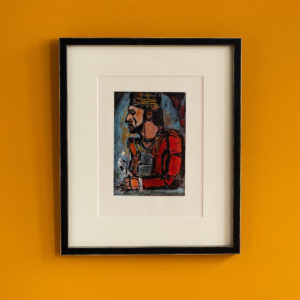
The works of George Roualt. ‘The Old King’, c.1916-36,
£225The works of George Roualt. ‘The Old King’, c.1916-36,
Although Georges Rouault a contemporary of Cubism, Expressionism and Fauvism, he never formally associated himself with any of these movements. As an independent he found his inspiration in the realities of everyday life and in religious subjects which he imbued with an authentic spirituality. Early in his career Parisian art dealer, Ambroise Vollard, bought the full contents of Georges Rouault’s studio. The artist agreed on the condition that he could finish his work at his own pace. Most of his works represented circus figures, religious subjects or landscapes.£225 -
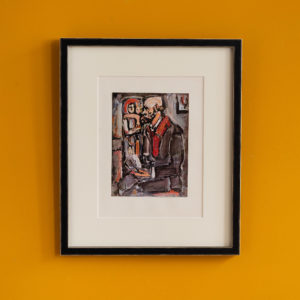
The works of George Roualt. ‘Portrait of Verlaine’, c.1938,
£225The works of George Roualt. ‘Portrait of Verlaine’, c.1938,
Although Georges Rouault a contemporary of Cubism, Expressionism and Fauvism, he never formally associated himself with any of these movements. As an independent he found his inspiration in the realities of everyday life and in religious subjects which he imbued with an authentic spirituality. Early in his career Parisian art dealer, Ambroise Vollard, bought the full contents of Georges Rouault’s studio. The artist agreed on the condition that he could finish his work at his own pace. Most of his works represented circus figures, religious subjects or landscapes.£225 -
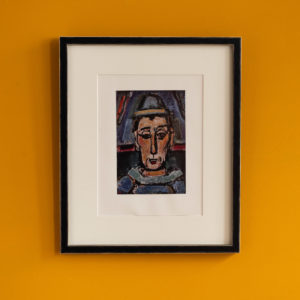
The works of George Roualt. ‘The English Clown’, 1938-39,
£225The works of George Roualt. ‘The English Clown’, 1938-39,
Although Georges Rouault a contemporary of Cubism, Expressionism and Fauvism, he never formally associated himself with any of these movements. As an independent he found his inspiration in the realities of everyday life and in religious subjects which he imbued with an authentic spirituality. Early in his career Parisian art dealer, Ambroise Vollard, bought the full contents of Georges Rouault’s studio. The artist agreed on the condition that he could finish his work at his own pace. Most of his works represented circus figures, religious subjects or landscapes.£225 -
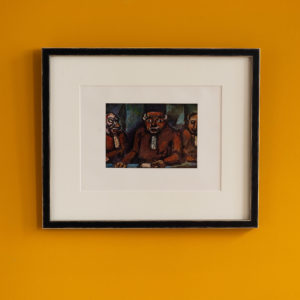
The works of George Roualt. ‘Three Judges’, 1918,
£225The works of George Roualt. ‘Three Judges’, 1918,
Although Georges Rouault a contemporary of Cubism, Expressionism and Fauvism, he never formally associated himself with any of these movements. As an independent he found his inspiration in the realities of everyday life and in religious subjects which he imbued with an authentic spirituality. Early in his career Parisian art dealer, Ambroise Vollard, bought the full contents of Georges Rouault’s studio. The artist agreed on the condition that he could finish his work at his own pace. Most of his works represented circus figures, religious subjects or landscapes.£225 -
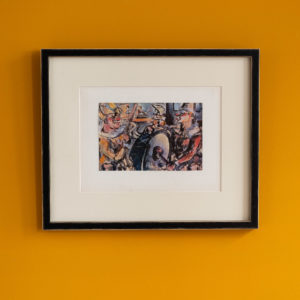
The works of George Roualt. ‘Parade’, 1907,
£225The works of George Roualt. ‘Parade’, 1907,
Although Georges Rouault a contemporary of Cubism, Expressionism and Fauvism, he never formally associated himself with any of these movements. As an independent he found his inspiration in the realities of everyday life and in religious subjects which he imbued with an authentic spirituality. Early in his career Parisian art dealer, Ambroise Vollard, bought the full contents of Georges Rouault’s studio. The artist agreed on the condition that he could finish his work at his own pace. Most of his works represented circus figures, religious subjects or landscapes.£225 -

The works of George Roualt. ‘The Humane Landscape’, 1928,
£225The works of George Roualt. ‘The Humane Landscape’, 1928,
Although Georges Rouault a contemporary of Cubism, Expressionism and Fauvism, he never formally associated himself with any of these movements. As an independent he found his inspiration in the realities of everyday life and in religious subjects which he imbued with an authentic spirituality. Early in his career Parisian art dealer, Ambroise Vollard, bought the full contents of Georges Rouault’s studio. The artist agreed on the condition that he could finish his work at his own pace. Most of his works represented circus figures, religious subjects or landscapes.£225 -
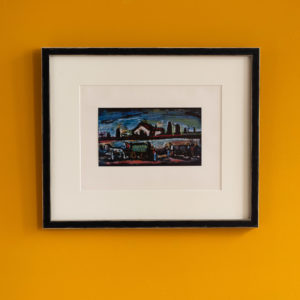
The works of George Roualt. ‘The Funeral’, 1930,
£225The works of George Roualt. ‘The Funeral’, 1930,
Although Georges Rouault a contemporary of Cubism, Expressionism and Fauvism, he never formally associated himself with any of these movements. As an independent he found his inspiration in the realities of everyday life and in religious subjects which he imbued with an authentic spirituality. Early in his career Parisian art dealer, Ambroise Vollard, bought the full contents of Georges Rouault’s studio. The artist agreed on the condition that he could finish his work at his own pace. Most of his works represented circus figures, religious subjects or landscapes.£225 -

The works of George Roualt. ‘Three Clowns’, 1917,
£225The works of George Roualt. ‘Three Clowns’, 1917,
Although Georges Rouault a contemporary of Cubism, Expressionism and Fauvism, he never formally associated himself with any of these movements. As an independent he found his inspiration in the realities of everyday life and in religious subjects which he imbued with an authentic spirituality. Early in his career Parisian art dealer, Ambroise Vollard, bought the full contents of Georges Rouault’s studio. The artist agreed on the condition that he could finish his work at his own pace. Most of his works represented circus figures, religious subjects or landscapes.£225 -
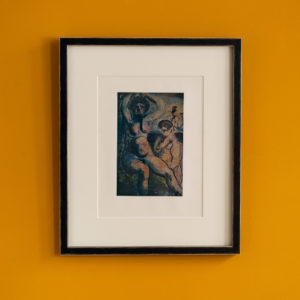
The works of George Roualt. ‘Nudes’, c.1907,
£225The works of George Roualt. ‘Nudes’, c.1907,
Although Georges Rouault a contemporary of Cubism, Expressionism and Fauvism, he never formally associated himself with any of these movements. As an independent he found his inspiration in the realities of everyday life and in religious subjects which he imbued with an authentic spirituality. Early in his career Parisian art dealer, Ambroise Vollard, bought the full contents of Georges Rouault’s studio. The artist agreed on the condition that he could finish his work at his own pace. Most of his works represented circus figures, religious subjects or landscapes.£225 -
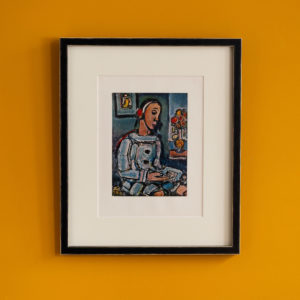
The works of George Roualt. ‘The Wise Pierrot, 1945’,
£225The works of George Roualt. ‘The Wise Pierrot, 1945’,
Although Georges Rouault a contemporary of Cubism, Expressionism and Fauvism, he never formally associated himself with any of these movements. As an independent he found his inspiration in the realities of everyday life and in religious subjects which he imbued with an authentic spirituality. Early in his career Parisian art dealer, Ambroise Vollard, bought the full contents of Georges Rouault’s studio. The artist agreed on the condition that he could finish his work at his own pace. Most of his works represented circus figures, religious subjects or landscapes.£225 -
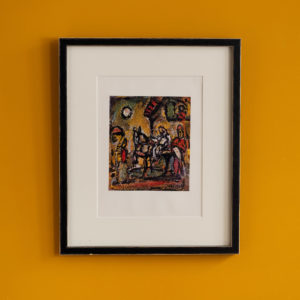
The works of George Roualt. ‘The Flight into Egypt, 1948’,
£225The works of George Roualt. ‘The Flight into Egypt, 1948’,
Although Georges Rouault a contemporary of Cubism, Expressionism and Fauvism, he never formally associated himself with any of these movements. As an independent he found his inspiration in the realities of everyday life and in religious subjects which he imbued with an authentic spirituality. Early in his career Parisian art dealer, Ambroise Vollard, bought the full contents of Georges Rouault’s studio. The artist agreed on the condition that he could finish his work at his own pace. Most of his works represented circus figures, religious subjects or landscapes.£225
Featured Items
-
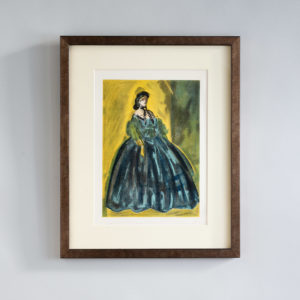
Portraits Part II by Constantin Guys, Verve Vol 2 / No. 5-6.
£500Portraits Part II by Constantin Guys, Verve Vol 2 / No. 5-6.
The Verve Review was a purposefully luxurious. It ran from 1937 to 1960, but with only 38 editions available, due to the high degree of design and editorial work dedicated to each issue. Each edition contained unique lithographic prints, commissioned by the editor, and each cover a double-page lithograph elaborated by one of the artists contained within. It was the brainchild of its editor Stratis Eleftheriades, a Greek National who moved to Paris in the early thirties to take part in the growing Modernist movement, writing under the name of Teriade.£500 -
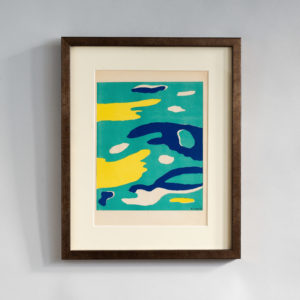
The Four Elements, Water by Fernand Leger, Verve Vol. 1 / No. 1.
£600The Four Elements, Water by Fernand Leger, Verve Vol. 1 / No. 1.
The Verve Review was a purposefully luxurious. It ran from 1937 to 1960, but with only 38 editions available, due to the high degree of design and editorial work dedicated to each issue. Each edition contained unique lithographic prints, commissioned by the editor, and each cover a double-page lithograph elaborated by one of the artists contained within. It was the brainchild of its editor Stratis Eleftheriades, a Greek National who moved to Paris in the early thirties to take part in the growing Modernist movement, writing under the name of Teriade.£600 -
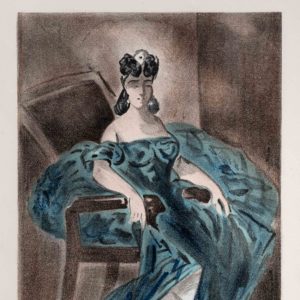
Portraits Part I by Constantin Guys, Verve Vol 2 / No. 5-6.
£500Portraits Part I by Constantin Guys, Verve Vol 2 / No. 5-6.
The Verve Review was a purposefully luxurious. It ran from 1937 to 1960, but with only 38 editions available, due to the high degree of design and editorial work dedicated to each issue. Each edition contained unique lithographic prints, commissioned by the editor, and each cover a double-page lithograph elaborated by one of the artists contained within. It was the brainchild of its editor Stratis Eleftheriades, a Greek National who moved to Paris in the early thirties to take part in the growing Modernist movement, writing under the name of Teriade.£500 -
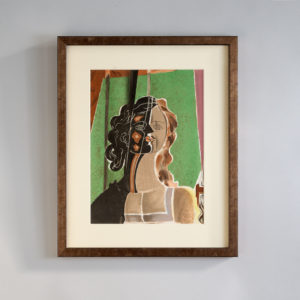
Figure by Georges Braque, Verve Vol 2 / No. 5-6.
£800Figure by Georges Braque, Verve Vol 2 / No. 5-6.
The Verve Review was a purposefully luxurious. It ran from 1937 to 1960, but with only 38 editions available, due to the high degree of design and editorial work dedicated to each issue. Each edition contained unique lithographic prints, commissioned by the editor, and each cover a double-page lithograph elaborated by one of the artists contained within. It was the brainchild of its editor Stratis Eleftheriades, a Greek National who moved to Paris in the early thirties to take part in the growing Modernist movement, writing under the name of Teriade.£800
